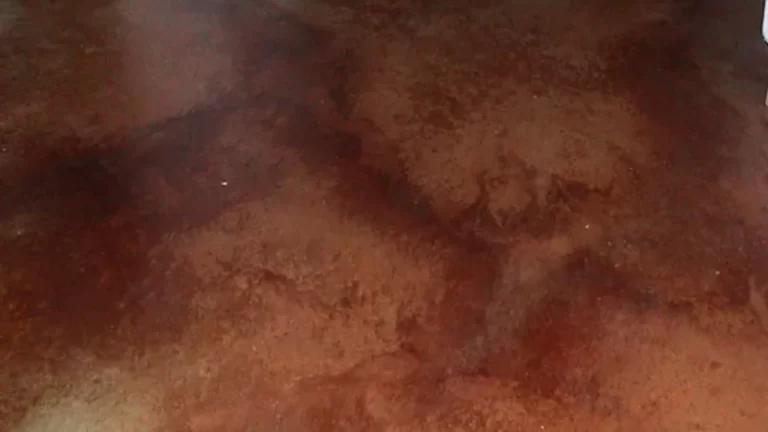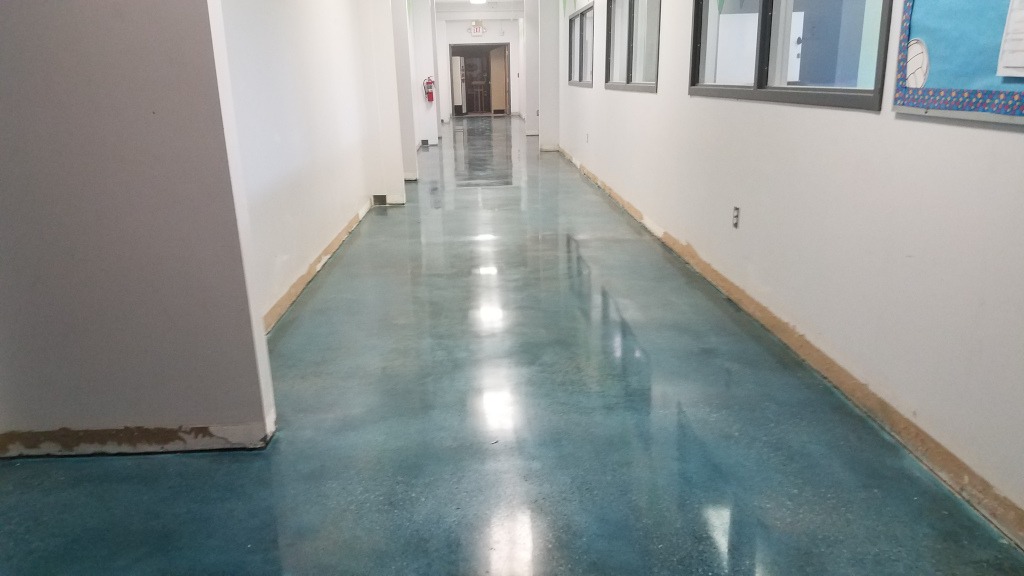
Staining and dyeing are two distinct methods of coloring concrete, each with its own characteristics and effects.
Here’s a breakdown of the key differences between staining and dyeing concrete:


Stains
Chemistry: Concrete staining involves the use of acidic or reactive chemical stains. These stains contain metallic salts that react with the minerals present in the concrete’s surface. This chemical reaction produces unique, semi-translucent, and variegated color patterns.
Color Range: Acid stains typically offer a more limited color palette, which includes earthy tones like browns, greens, and blues. The final color depends on the concrete’s composition and can vary from one surface to another, creating a mottled, marbled appearance.
Penetration: Acid stains penetrate into the concrete, bonding with the surface and becoming a permanent part of it. They do not peel or chip, but they can wear away over time and may require periodic resealing.
Texture and Depth: Acid staining can create a textured, multi-toned appearance with depth and character, resembling natural stone or aged leather.
Cost: Acid staining tends to be more affordable compared to dyeing or other decorative concrete coloring methods.
Dyes
Chemistry: Concrete dyeing involves the use of water-based or solvent-based dyes. These dyes consist of tiny particles that penetrate the concrete’s pores and color it uniformly.
Color Range: Concrete dyes offer a wider and more vibrant color spectrum, including bright and bold hues. They can be easily mixed to create custom colors, providing greater flexibility in design.
Penetration: Dyes penetrate the concrete deeply and uniformly, creating a consistent color throughout the entire surface. They are generally more colorfast than acid stains and less likely to fade or change over time.
Texture and Depth: Dyeing produces a more uniform and contemporary look, often with a flat or matte finish. While it imparts color, it may not create the same depth and texture as acid staining.
Cost: Concrete dyeing is typically more expensive than acid staining due to the wider range of color options and the even color distribution it provides.
The choice between staining and dyeing concrete depends on your design goals and preferences. Acid staining offers a more organic and variegated appearance with limited color options, while dyeing provides a broader color spectrum and uniform, vibrant results. Your choice may also depend on factors like budget, maintenance considerations, and the existing condition of the concrete surface. Contact us today and our specialists will help you decide which method best suits your specific project.
